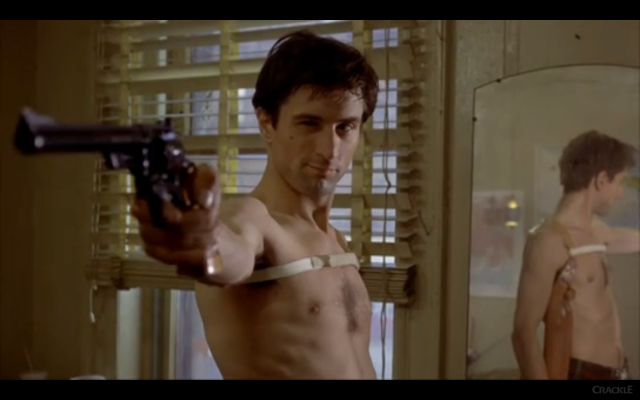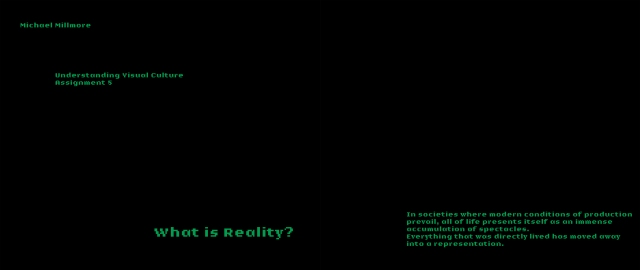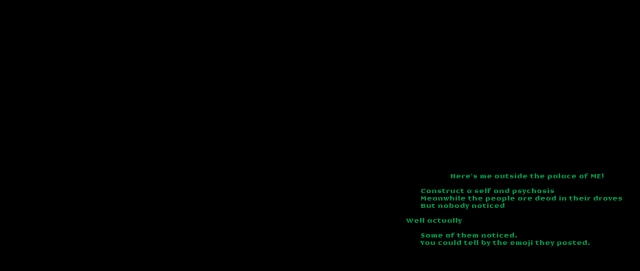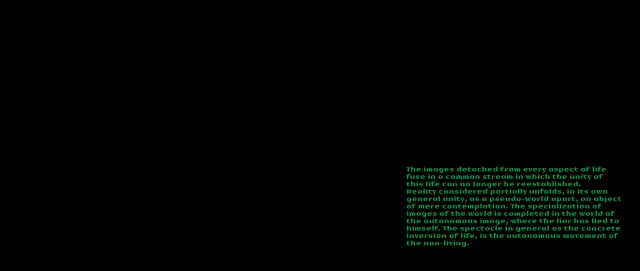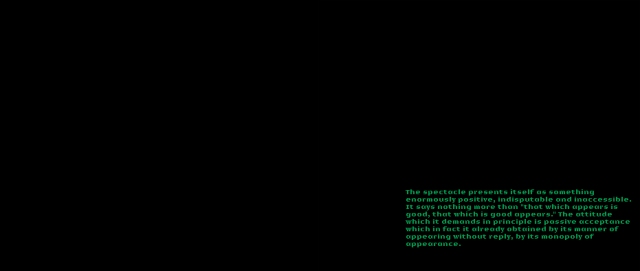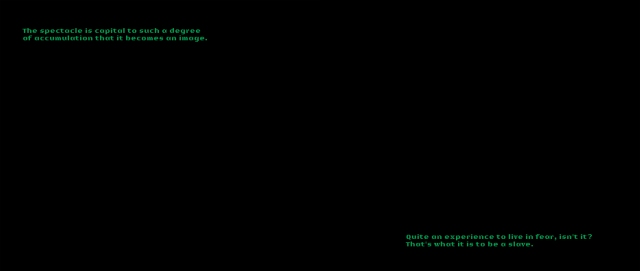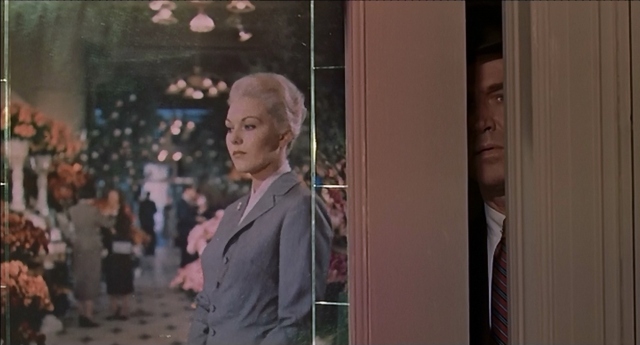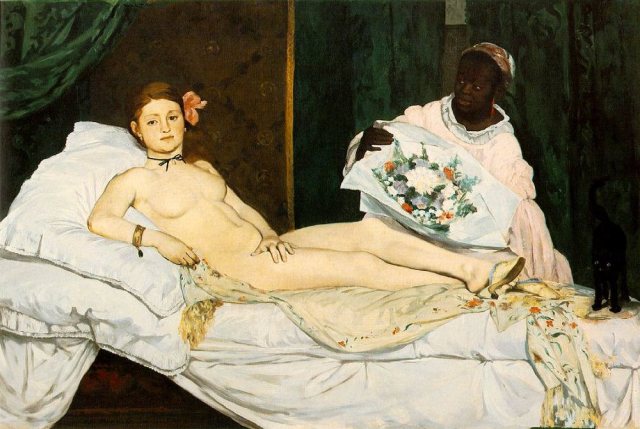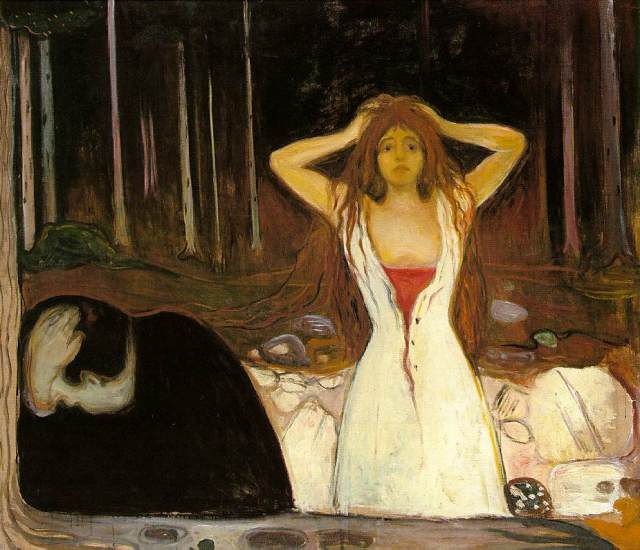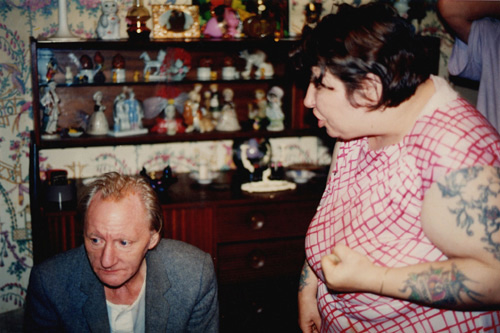Read chapter 5 of the course reader, Panopticism by Michel Foucault on pps. 61 – 71 and make notes.
Notes on the Panopticon/panopticism:
The Panopticon was conceived by English philosopher and social reformer Jeremy Bentham (1748-1832) as a model of prison architecture enabling, what he thought was, a therapeutic form of total surveillance. The design of the Panopticon was based around a concentric building comprising of rings of cells at the centre of which stands a guard tower. This system enabled guards to view prisoners without being seen themselves which causes the inmates to modify their behaviour – what Bentham described as gaining power of “mind over mind.” (Sturken and Cartwright, 2009: 107) The success of the Panopticon design is that a guard does not have to be present – what matters is the idea of being viewed at all times which becomes fixed in the mind of each prisoner – and this is what keeps them under control in a regime of silent discipline. Bentham saw the chief virtue of the Panopticon as being the reduction of the need for violent forms of coercion – the lack of privacy would have a remedial effect on the prisoners, forcing them to internalise socially approved standards of behaviour and rehabilitate themselves for re-entry into society.
In ‘Discipline and Punish: the birth of the prison’ (1975), Michel Foucault explored the idea of the Panopticon which he believed represented an emblematic of shift not only the treatment of prisoners but in organizational rationality of society as a whole. He saw the Panoptic model as being transferrable, and indeed present, in not only prisons but hospitals, educational establishments and the workplace. Foucault was interested in the psychological nature of the Panopticon, the relentless ‘inspecting gaze’ – a feature he viewed as both fascinating and disturbing. Unlike dungeons, which remove prisoners from sight and give them some protection from scrutiny, the prisoners of the Panopticon imagine themselves being constantly watched – and it is this that keeps them in line. They internalise the figure of the imagined observer and modify their behaviour as subjects under surveillance even when no one is watching. Foucault suggested that in modern society we behave as if we are under a scrutinizing, panoptic gaze: we internalise the rules and norms of society as we imagine ourselves to be constantly under a watchful eye that expects us to behave in this way.
Howells and Negreiros (2011: 108-9) compare the Panopticon to CCTV – similarly these cameras do not need to be turned on to exercise a disciplinary function because we self censor and self regulate so effectively. They assert that the relationship between image and power which is enacted through the internalising of the inspecting gaze is a phenomenon associated with the emergence of modernity. The previous relationship could be designated ‘spectacular’, that is, overt displays of power made visible to ordinary people. For example, heavily ritualised power structures such as monarchy, totalitarian regimes and religion – all of which function as a warning against subversion of the status quo. Although the function of power is less overt due to the prevalence of surveillance, it is no less ideologically determinant. Sturken and Cartwright (2009: 108-110) agree that camera surveillance is a form of intrusion that we have come to accept: the physical form of the inspecting gaze that we imagine. Photographic images form part of what Foucault termed the docile bodies of the modern state: citizens who participate in the ideologies of the society through a desire to conform. Homogenous media and advertising images that promote the ‘perfect look’ are manifestations of this.
Notes on ‘Panopticism’ by Michel Foucault in Evans and Hall (1999) pps. 61-71.
The extract begins with a description of the measures taken when the plague appeared in a town in the 17thC: a system of surveillance based on permanent registration – the plague is met by order – it’s function to prevent disease being transmitted by the mixing together of bodies. The evil of prohibition is outweighed by the danger of increased fear and death.
The leper gave rise to rituals of exclusion and the plague to disciplinary projects. The plague stricken town is the utopia of the perfectly governed city and ideal exercise of disciplinary power: traversed with hierarchy, surveillance, observation and writing.
In the 19thC the projects of exclusion and discipline begin to come together in the form of the psychiatric system, the penitentiary, the reformatory, the approved school and the hospital.
Description of Bentham’s Panopticon: at it’s periphery an annular building, at the centre a tower pierced with wide windows that open into the inner side of the ring. The peripheric building is divided into cells, each of which extend the whole width of the building. Each has two windows – one inside corresponding with the windows of the tower, the other, outside allowing light to cross from one end of the cell to the other. A supervisor is placed in the central tower. Each cell has place for a madman, patient, condemned man, worker or schoolboy. The principles of the dungeon, to enclose, deprive of light, are reversed with only enclosure being preserved.
“Full lighting and the eye of the supervisor capture better than darkness, which ultimately protected. Visibility is a trap.”
The negative effect of the “compact swarming masses” found in places of confinement as depicted by Goya are also avoided.
The lack of contact between confined individuals who are constantly seen by the supervisor, prevents disruption as invisibility is a guarantee of order. The crowd/collective effort is abolished and replaced by a collection of separated individualities. From the guardians point of view it is replaced by a multiplicity that can be numbered and supervised. From the inmates point of view a separated and observed solitude:
“Hence the major effect of the Panopticon: to induce in the inmate a state of conscious and permanent visibility that ensures the automatic functioning of power.”
The surveillance is permanent in its effects even if it is discontinuous in its action: the inmates are caught in a power situation of which they are the bearers themselves. Bentham laid down the principle that “power should be visible and unverifiable.” In the peripheric ring of the Panopticon, “one is totally seen without ever seeing.” In the central tower “one sees everything without ever being seen.”
Any random individual can exercise power by being the observer in the tower – even the director’s servants. It does not matter what motivates the observer, in fact, the more anonymous and temporary the greater the risk of the prisoner being surprised and anxiously aware of being observed.
No restraints are required: “he who is subjected to a field of visibility, and who knows it, assumes responsibility for the constraints of power.”
The Panopticon makes it possible to observe inmates and draw comparison and differences: it can be used as a laboratory to carry out experiments. For example – to correct individuals, monitor the effect of medicines, monitor the effectiveness of varying punishments, teach different techniques to workers, bring up children under different systems of thought.
“The Panopticon is a privileged place for experiments on men, and for analysing with complete certainty the transformations that may be obtained from them.”
The Panopticon is a generalised model of functioning and way of defining power relations in the everyday life of men as opposed to “ruined prisons littered with the mechanisms of torture.” In each application it is the perfect exercise of power: it can reduce the number who exercise it, while increasing the number of those on whom it is exercised.
Many video artists today use themselves as their subject (e.g. Lindsay Seers). Think about this in relation to panopticism.
Lindsay Seers presents a curated version of her life as her artwork using aspects of her biography (which may or may not be true) as her inspiration. Some of her works are presented as identifiable artworks while other aspects are less easy to define and categorise presented in the documentary mode or as interviews with her mother and psychologists which could either back her biography or be part of a fabrication. For example, Seers’ says that she was mute and had an eidetic (photographic) memory until the age of 8. This disappeared and she uttered her first words when she recognised her reflection in the mirror for the first time, however, the experience had such an effect as to drive her to ‘become’ a camera in an attempt to recapture the immediacy of experience she felt during these early years. Her early works involve turning herself into a ‘human camera’ – by putting photographic paper in her mouth and using the opening and shutting of her jaw as the camera shutter to make exposures. This results in images framed by her teeth, stained with saliva and tinged with the blood from her cheeks.
Seers’ work is an example of what Mike Brennan terms ‘neo-narration’: the practice of artists using a variety of narrative devices to produce art. The narrative that Lindsay Seers presents could be read as an extended performance piece, it is impossible to tell which (if any) of the aspects of her personal biography that she presents as both the subject matter and inspiration is real. This is almost a curation of her life – as viewers we are left with the choice of taking everything presented as the truth, in which case Seers is being almost confessional in what she is showing us, or, questioning how much truth there is in what we see. Either way, the effect is to distance us from the reality or at least puts Seers in control of her own narrative. The total scrutiny someone in the public eye is put under could be likened to the inmates experience in the Panopticon – Seers both takes control and subverts this by putting herself in our apparent full gaze. In a way the wish of many people to curate their lives through social media and present a particular image of themselves could be seen as a less sophisticated example of Seers work – this sort of presentation only shows a particular side of ourselves that we want to project to the world at large.
Find six images in any medium: two that are the result of looking, two of observing and two of surveillance and explain your choices.
Before attempting this part of the project I felt it important to consider and define looking, observation and surveillance. For each of the headings I have chosen photography as examples because of the way a photograph gives the illusion that it is a representation of the real world.
Looking:
Looking is the most seemingly benign of the three ways off seeing we are asked to consider – we look all of the time, it is a normal and natural part of our day to day lives, it is one of our key senses that allow us to negotiate the world around us. Except, we do not look in a neutral way – our mind is constantly making judgements about what we see. Our understanding of ourselves is fundamentally based upon the looking at the world around us, we also gain awareness about ourselves by recognising (or even disregarding) visual clues of others who are looking at us. The act of looking can have a sinister edge – when does looking stop and voyeurism begin?

Judith Joy Ross: Untitled, 1988 (from the series Easton Portraits)
This portrait appears at first benign but on closer inspection presents a problematic view of adolescence and emerging sexuality. Three girls wearing swimsuits stand together for what appears to be holiday snapshot. The closer we look however, the more we can read from the image and the more ambiguous it becomes. The first two girls appear to be twins, although there are subtle differences in body shape which could potentially suggest they are sisters rather than twins. They stand conventionally looking straight toward the camera, and therefore the viewer of the photograph, their smiles are not exactly forced but have the appearance of not being natural – we can imagine them being asked to ‘say cheese’ by the photographer, their hands are crossed at their waist, hands tightly held together suggesting a subconscious lack of confidence in their body image or a need to cover their modesty as much as possible. Another girl stands next to the twins – she appears to be a similar age and does not share the family resemblance of the other two girls. Her pose is quite different from the sisters – she appears relaxed with arms by her side, hips slightly tilted in a way that could be read as provocative. Her smile is natural and she has an air of assured confidence. Unlike the other two girls she is looking to the side rather than straight at the camera. This leads us to consider who she is looking at and question why she has chosen not to perform for the camera, who is it that she is the recipient of her gaze and why does she choose not to look at us? Behind the three girls a male figure, out of focus, shirt off, can just be made out in the background. He is posed in such a way that it is obvious he is viewing the girls. To be looking at them in such a way from behind, so they are unaware of him, appears potentially disturbing – we wonder about his motives. This also has the effect of provoking discomfort in the viewer: are we any better than this man – looking on young girls uninvited and unwanted way? If this is a family snapshot what right do we have to be studying the picture? What right do we have to be making such judgements about the young girls in the picture and what does that say about us?

Garry Winogrand: New York, 1969
Street photography, a genre that Garry Winogrand is perhaps the most famous exponent, relies on catching fleeting, often candid, moments. In this picture, taken at a tilted angle that only adds a sense of immediate spontaneity, you feel the protagonists putting the photographer (and the viewer) under scrutiny. A young couple kiss in a doorway at the side of the frame, the man has his back to the camera and does not witness the picture being taken. The girl however sees exactly what is happening, her eyes open and pointed directly toward the camera lens. Another girl stands in the centre of the frame also looking straight toward us. Her expression is challenging, and yet we are left to wonder about the relationship between her and the kissing couple. Is she a friend playing gooseberry to the courting of her more attractive companion? Is she simply a passer by? The suggestion is that it is okay for her to be witnessing the passionate scene but not the photographer, and maybe she is right – her gaze is certainly so powerful that most people would not have dared to press the shutter. Winogrand however is unafraid and seems to recognise the power that this double returned gaze creates in the viewer.
Observation:
Observation has connotations of objectivity and looking with purpose, of gaining empirical knowledge. For example, a physician would be said to observe their patients in order to arrive understand their symptoms and arrive at a diagnosis or cure. It suggests a planned activity with a tangible outcome.

Martin Parr: Pisa, Italy (from the series Small World 1987-1994)
Martin Parr has made his photographic career through observing. His images often show the world in a different light – not necessarily in a quirky way but more accurately he demonstrates a view of the world that is not usually presented. His Small World series from which this image is taken explores themes of global tourism, particularly our need to document our travels photographically. This image shows tourists in Pisa in front of the famous leaning tower recreating the same pose of seemingly holding the tower up. Of course, this optical illusion is only visible from the angle of their particular photographer. Parr shows the wide view of a number of tourists recreating the same pose which wittily and directly shows the absurdity of the situation combined with the need for the majority of visitors to do the same thing – as if some sort of ritual.

George Georgiou: Last Stop
For his photographic series Last Stop, George Georgiou wanted to explore the diversity and vibrancy of London. To do this he chose to take pictures from the seat of a bus as it travelled around. His viewpoint therefore was always confined to both the route of the bus and what was in front of him at any given time. All street photography relies heavily on chance, and clearly Georgiou always had the choice of when to press the shutter and which direction to point his camera, however, the constraints of the project make this for me an exercise in observation. In this image multiple readings could be taken from the people in the scene varying from the dramatic beginnings of an argument or disagreement to simply a conversation between friends. The three people in the centre of the image could be friends enjoying an afternoon drink – the man standing could be a waiter explaining what the establishment has to offer. Or this could be someone who has seen the couple in the bar and has come in to confront them about something. The hand on the man’s head could either be the most comfortable way for him to sit or an involuntary reaction to what he is being told. The woman in the background could be with the man standing and arriving either to back him up or try to pull him away or she could simply be an unrelated customer. The waiter in the foreground could be reacting to what is being said behind him or simply in the process of turning to face the other way.
The fact that because of reflections and the behaviour of the light in the picture it is obvious we are looking through glass adds another dimension to the image for me and is what makes it observation. This has connotations of animals a the zoo, we are observing the people in this image as they behave in a completely natural way unaware of being watched which would have caused alterations in behaviour as we have seen in the previous images above.
Surveillance:
In some ways surveillance is the simplest of the three terms to define as it refers to attentive observation to gather information. This can either be overt, like CCTV cameras that behave in a similar way to the Panopticon by making us seen without us having the ability to see who is watching us. And covert, for example undercover surveillance – images taken without our knowledge or consent. Often surveillance is an instrument of power used to assert control.

Adam Broomberg and Oliver Chanarin: Yekaterina Samutsevich of Pussy Riot, 2013 (from the series Spirit is a Bone)
It seems that we have somehow come to accept being under constant surveillance by CCTV cameras as the norm. Indeed, many now welcome the feeling of safety that these imply. With their ‘Spirit is a Bone’ project, Broomberg and Chanarin explore one of the ways surveillance may evolve. They experiment with a Russian made face recognition system that scans individuals faces as they move through public spaces using multiple cameras from multiple angles – a 3D model of an individuals face is produced that can be stored for reference and potentially used in a similar way to finger prints in the future.
The image here, which has an eerie, death mask type quality, is of a member of the band Pussy Riot who have been vocally critical of the current Russian political system and President Putin. The power here is not in the image itself which is unspectacular, but the possibilities of what the technology could mean. The applications in an oppressive regime like that in Russia (and of course the memory of the way photographs were used and altered during the Soviet era also resonate) is truly frightening. Perhaps the application in the so-called ‘free world’ is just as terrifying, perhaps more so, as the sort of surveillance here relies on complicity rather than repression.

Merry Alpern: Dirty Windows #23
Merry Alpern’s series ‘Dirty Windows’ are voyeuristic images taken from her friends loft apartment of a gentlemen’s club on the other side of the airshaft between the buildings. Alpern would wait with her camera and tripod for any activity to present itself at the two visible windows 15 feet and one flight down from her friends flat. Sights recorded range from people going to the toilet to drug taking and sex. Alpern describes herself as an anthropologist fascinated by the different ways the same activity played out (for example, how each man after urinating shakes his penis a little differently, but none seem to wash their hands. Angier, 2006:61)
The images, as can be seen in the picture here, in this series have an overt voyeurism – like a Peeping Tom except the photographer is female. Does that make the images any less lascivious I wonder? Stylistically the grainy, high contrast shots give a raw look that is in keeping with the seedy nature of the subject matter and puts the viewer in to the mind space of the voyeur. I wonder if Alpern would have been so compelled to make these images if the view was less sensational, and if so would they have gained any recognition or notice?
Thoughts…
I have found this project to be fascinating, particular the final question of what constitutes looking, observation and surveillance. Even looking back at the images I have chosen now I can see a great deal of crossover between the headings and I am not sure whether I have encapsulated fully this question – or indeed whether this is even possible.
The power of images is the major theme of UVC and indeed visual culture as a subject in itself. The more I think about it the more nuanced and far reaching this subject is however, the power of images is not simply abut top down systems of control but also about a complex series of interlocking and overlapping themes and concerns. Power is both present within a societies dominant ideology and also with citizens. Control is not about oppression in late capitalist societies but about making us all complicit in the overarching systems. If we take Foucault’s notion of panopticism and apply it as a metaphor for conformity to social norms, we realise how we co-opt ourselves into a world where surveillance is the norm and willingly give away our freedoms and rights – after all, the only people who have anything to worry are those who have something to hide.
Bibliography:
Andreasson, K. (2014) Broomberg and Chanarin’s best photograph: Pussy riot in 3D. The Guardian, 6th February 2014. Available at: https://www.theguardian.com/artanddesign/2014/feb/06/broomberg-chanarin-best-photograph-pussy-riot [Accessed on 19 September 2016]
Angier, R. (2006) Train your gaze: (a practical and theoretical introduction to portrait photography). Lausanne: AVA Academia
Borromeo, L. (2010) Tate makes surveillance an art form. The Guardian, 28th May 2010, Available at: https://www.theguardian.com/commentisfree/libertycentral/2010/may/28/tate-modern-surveillance-art [Accessed on 14 September 2016]
Brown, M. (2010) Tate modern in display of voyeurism for photography curator’s debut. The Guardian, 26th May 2010 Available at: https://www.theguardian.com/artanddesign/2010/may/26/tate-modern-voyeurism-exhibition-photography [Accessed on 14 September 2016]
Buchanan, I (2010) Oxford Dictionary of Critical Theory. New York: Oxford University Press inc.
Clarke, G. (1997) The photograph: A visual and cultural history. New York: Oxford University Press.
Evans, J. and Hall, S. (eds.) (1999) Visual Culture: The Reader. London: Sage
Howells, R. Negreiros, J. (2011) Visual Culture 2nd Ed, Cambridge: Polity Press
Jasbar, A. and Augschöll, D. (N.D.) Interview with Judith Joy Ross. Available at: http://www.ahornmagazine.com/issue_8/interview_ross/interview_ross.html [Accessed on 19 September 2016]
Macey, D. (2000) The Penguin Dictionary of Critical Theory London: Penguin books
Morrison, B. (2010) Exposed: Voyeurism, surveillance and the camera. The Guardian, 22nd May 2010. Available at: https://www.theguardian.com/culture/2010/may/22/exposed-voyuerism-exhibition-blake-morrison?CMP=Share_iOSApp_Other [Accessed on 14 September 2016]
Pooke, G. and Newall, D. (2008) The Basics: Art History. Oxford: Routledge.
Sturken, M. and Cartwright, L. (2009) Practices of Looking: An Introduction to Visual Culture. Oxford: Oxford University Press
Tate.org.uk. (2016) Exposed: Voyeurism, surveillance and the camera Available at: http://www.marthagarzon.com/contemporary_art/2010/03/exposed-voyeurism-surveillance-and-the-camera/ [Accessed on 20 September 2016]
Wombell, P. (2015) Data Iconoclast in British Journal of Photography, December 2015. London: Aptitude media




























